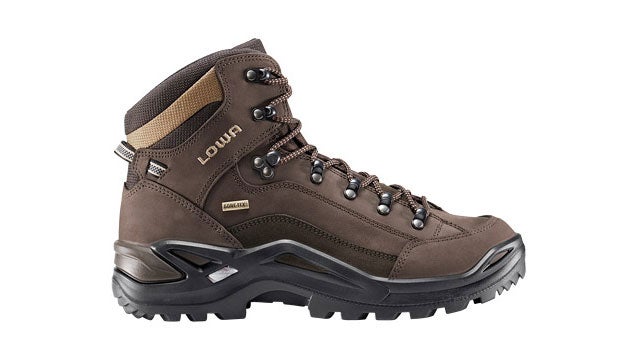One of the ideas behind hiking boots is that they afford more ankle protection and foot protection than regular street shoes or running shoes. Some of that support is simply a product of the design—firm soles offer greater stability and prevent the foot from “rolling over” into a sprain. But most hiking boots also use a tall design and heavy leather material to keep ankles aligned and upright, even on rough trails.
That’s well and good, but only if you have healthy ankles. My right ankle, however, has seen better days. A long-ago sports injury (it was close to a third-degree sprain—I still can hear the ligament tearing) now haunts me on a regular basis. And if you have an unstable ankle, no boot on earth is going to save you if the foot starts to roll over. Even big plastic mountaineering boots. So I opt for extra support in the form of an ankle brace.
There are several models out there, but I wear an . They don’t just “support” the ankle like an elastic wrap, they pretty much lock it in place. The Aso is built with an inner section that laces up is covered by two ballistic-nylon straps that wrap around the ankle and tie down with hook-and-loop closures. It goes for $30 and fits into any shoe.
Not everyone should go this route. Indeed, most people don’t require it. But if you have troublesome ankles that roll over and sprain easily, get a brace. I’ve never re-injured my ankle when wearing an ankle brace, but without one it happens regularly. And I still recommend that people with healthy ankles wear real boots–over-the-ankle, leather boots–because they’ll help prevent injury.
A few years ago Lowa experimented with a technology they called Biomex. It looked like a plastic exo-skeleton surrounding and bracing the ankle. I tried a pair and thought they were great. Alas, they proved difficult to manufacture and Lowa dropped the line.
Still, Lowa’s ($185) gives you a nice mix of light weight and stability. The boots ($165) do, too. And when I left my ankle brace home while hiking in the Grand Canyon last April, my ($185) held up well.
A simple way to make any pair of boots more stable is by swapping out the stock insole for a pair of Superfeet insoles ($39).
—Doug Gantenbein


